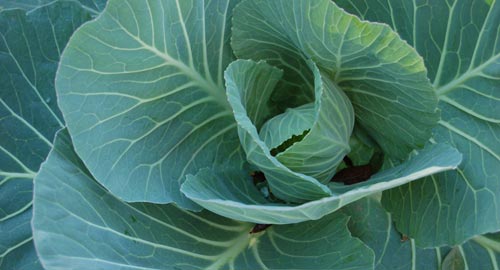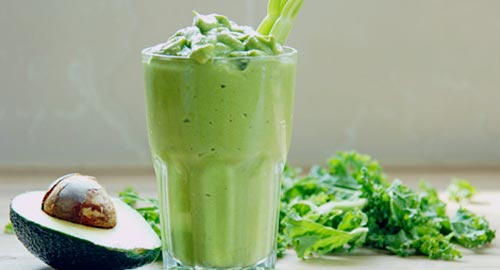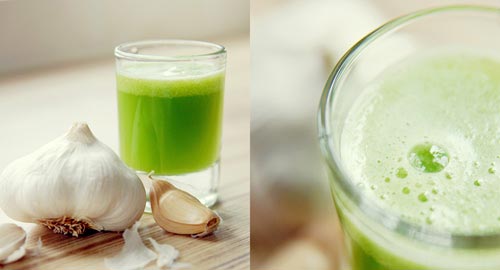Quite a while ago, I promised you an article on why you should rotate your greens. If you’ve been drinking green smoothies, it’s probably about time to start switching things up from your daily spinach habit and incorporating new veggies.
It is common knowledge that you should eat greens like they’re the only food on the planet, as I’m sure your mom taught you, but do you know why?
Greens, like spinach, kale and chard contain loads of vitamins and micronutrients, and are just about carb-free. There are also tons of other green veggies that are amazing for health, such as bok choy, parsley and arugala. For the purposes of this article, we’ll be discussing many green vegetables and herbs, not just leafy greens.
Nutritional Benefits
While the nutrition of green vegetables is far too lengthy for this one column, here are some of the highlights of my favorite greens: Kale has over 1200% of your daily requirement of vitamin K (good for strong bones and to combat diabetes) per serving.
It’s relatively low in oxalates compared to spinach and is great for eye health. Both curly and flat kale are high in carotenoids. One serving of swiss chard has 1/3 of your daily potassium requirement (for those of us who get leg cramps). It’s also high in iron and vitamin C—which marries perfectly, since vitamin C helps the body assimilate the iron in foods.
Broccoli raab is sort of a misnomer—and broccoli haters will be glad. It’s actually a member of the turnip family, and high in vitamins A, C and K, as well as potassium.
A serving of bok choy, like other types of cabbage, is high in vitamins A, C and calcium. It’s fantastic in stir-fries or grated in raw coleslaw. Having the lightest in flavor of this group, bok choy is sweet and crisp—a welcome change from heavier flavors.
What about Oxalates?

There are some medical conditions where patients are urged not to eat foods containing oxalates. Others are concerned with their bone mass, and naturally want to avoid foods that could be leaching calcium from their bodies.
It makes sense to be concerned, but research prevails, and greens are still a spectacular food for just about everyone. I’d never consider telling people to just toss their primary care provider’s advice and eat raw greens, so please talk with your doctor if this information strikes a chord with you.
There are oxalates in many foods, including grains, legumes, fruits, vegetables, coffee, chocolate, tea, nuts and seeds. The beautiful thing about greens is that they also have loads of calcium.
Since the calcium in greens is more bioavailable than that of cow’s milk, you require less to build and maintain bone mass. It is possible to reduce the oxalate content in high-oxalate foods by 5-15% through cooking.
It’s important though, not to overcook your greens. You’ll lose nutrients that are hard to come by in other forms.
The greens highest in calcium are broccoli raab, cabbage, celery and bok choy. For leafy greens, look to mustard and turnip greens, kale and spinach.
For those with hypothyroidism concerned with the effects of oxalates on their condition, I suggest getting a daily dose of sea vegetables. I’ll get you a post on the benefits of kelp, dulse, nori and others soon, but it’s one of the best things you can do to nourish yourself naturally.
What’s In Season?
What’s in season depends largely on your area of the country. Many greens can be harvested in three or even all four seasons, especially if you live in a mild climate.
Arugula, cabbage, collards, turnip and mustard greens, spinach, kale and swiss chard grow 75% of the year, and lettuces grow year-round in North Georgia.
I live in the mid-Atlantic, so we’re seeing beautiful, delicate greens like lettuce and chard already. However, due to the late frost and the cold temperatures in other areas of the country, you may still be getting turnip and mustard greens. Obviously, you’ll use these differently!
Light Steaming
|
Milligrams/100 g serving
|
|
|
Spinach
|
750
|
| Beet Greens | 610 |
| Okra | 146 |
| Parsley | 100 |
| Leeks | 89 |
| Collard Greens | 74 |
“They” Said
- It’s Easy Eating Greens
- Bunch of Health: Spinach
- Vitamin K: Another Reason to Eat Your Greens
Some greens are harder to chew thoroughly and, as such, are more appropriate for steaming than others.
Celery, for example, is easy to just crunch into, but what about collard greens? Their toughness makes them well suited to light steaming and then being used in soups and as side dishes.
I’m not talking about that mass that’s been bubbling for hours on the stove—almost gray because the life has been cooked out of it. I’m talking about greens that are still GREEN, not those that have been boiling in ham juice from dawn until dusk.
Mustard greens are fantastic when steamed for just a few minutes, which preserves their peppery bite. Four to six minutes in a covered pan should do it.
I personally like to add a bit of olive oil, onion and garlic. Others prefer to steam their mustard and turnip greens with butter.
Again, be careful not to overcook your greens. I have horrible memories of cafeteria greens piled onto my tray, lifeless and mushy. Back then I thought I didn’t like greens. What I didn’t like was the texture of what I was served.
I have since been pleasantly surprised by greens in my adulthood.
Raw Soups
Some refer to raw soups as “blended salads,” but, as previously noted, I have texture issues and couldn’t handle drinking my salad. Gag! I prefer to think of them as soups instead!
I learned about raw soups a couple of years ago when I was looking into the raw lifestyle, and this tomato-spinach soup caught my eye. Tomato-Spinach Soup Courtesy of FredericPatenaude.com
- 2 tomatoes
- 1 tsp. apple cider vinegar, or lemon juice
- 4-5 stalks celery
- 3 oz. baby spinach
- Optional: 1/2 avocado
- Optional 1 Tbs. kelp or dulse granules
Start by blending the tomatoes with lemon juice (or apple cider vinegar), and add the celery ribs progressively, and then the baby spinach. If a richer consistency is desired, throw in half an avocado.
Season with kelp granules or dulse flakes (optional). I like to add a bit of RealSalt to this, though pure raw foodists would tend to stay away from it!
Green Smoothies

I’ve posted on the benefits of green smoothies before, and it’s still the best way I know to get your fruits and veggies in one fell swoop.
While my basic smoothie has variations for winter and summer fruits, it always uses spinach. I like to add a bit of romaine to mine as well. However, you’ve got to keep your smoothies interesting, and no one does that better than the original green smoothie proponents, the Boutenkos.
In Green for Life, Victoria Boutenko explains the benefits of blended greens. Their website has plenty of recipes to keep you interested, and I like this one for those of you still in early spring conditions: Pear-Chard-Mint Smoothie Courtesy of Victoria Boutenko
- 4 whole pears
- 5 leaves chard
- 1/2 bunch mint
- 2 cups water
- Blend until smooth and enjoy!
Oprah’s favorite guest Dr. Oz loves green smoothies. This recipe, available on Oprah’s website, is one that he has many mornings each week. This is really, really good. Dr. Oz Green Drink Recipe Recipe from Oprah.com
- 2 cups spinach
- 2 cups cucumber
- 1 head of celery
- 1/2 inch or teaspoon ginger root
- 1 bunch parsley
- 2 apples
- Juice of 1 lime
- Juice of 1/2 lemon
Place ingredients in a blender, add a handful of ice cubes and puree quickly for one minute.
Green Juices

When you want nutrients in your body fast, without fiber to slow your system, you want to juice. Green juices are especially important because often much of the nutrients from greens get left in the cooking water, or not chewed thoroughly in the raw. When you squeeze the life out of your greens, they go into your juice! Green Energizer Recipe from JuiceRecipesNow.com
- 2 apples
- 1/2 cucumber
- 1/2 lemon (peeled)
- 1/2 cup of kale
- 1/2 cup of spinach
- 1/4 bunch of celery
- 1/4 bulb of fennel
- 1″ of ginger
- 1/4 head of romaine lettuce
Juice all ingredients and enjoy the sweet deliciousness! I hope you’ve discovered some new ways to enjoy greens, and I’d love to hear about your creations!
